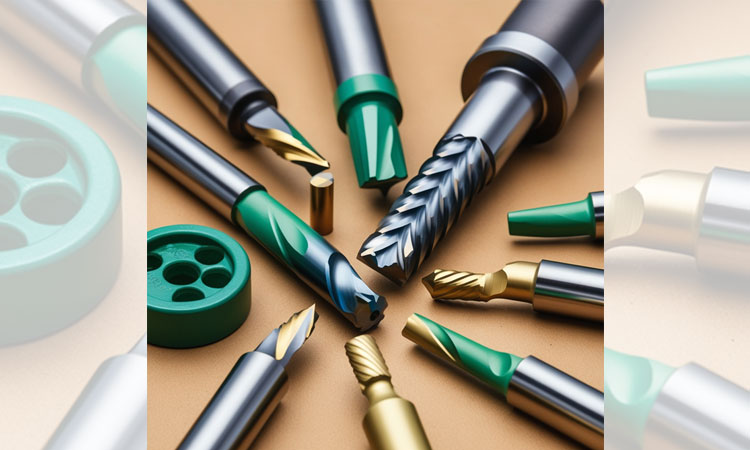As industries worldwide grapple with the challenges of climate change and environmental sustainability, the cutting tools sector is stepping up with innovative, eco-friendly solutions. The global cutting tool market, valued at USD 23 billion in 2023-24, is increasingly prioritizing sustainability, with eco-friendly practices projected to drive a 6% CAGR through 2030. In India, the government’s “Green Manufacturing” initiatives and corporate sustainability goals are propelling the adoption of greener materials, manufacturing processes, and recycling programs.
Eco-Friendly Materials: A Green Foundation
Sustainable cutting tool manufacturing begins with the selection of eco-friendly materials. Traditionally, tools are made from non-renewable resources like tungsten carbide, cobalt, and ceramics, which have a significant environmental footprint. To counter this, manufacturers are developing tools using recycled carbide, reducing dependency on virgin materials.
Globally, recycled carbide usage accounts for approximately 20% of all cutting tool production, and this figure is expected to rise to 35% by 2030. India is also catching up, with companies like Sandvik and Kennametal setting up facilities to reclaim and reuse tungsten carbide. These initiatives not only reduce mining-related emissions but also cut costs by up to 30%.
Sustainable Manufacturing Processes
Advanced manufacturing techniques are key to reducing energy consumption and waste in cutting tool production. Additive manufacturing, or 3D printing, is emerging as a game-changer, enabling the production of complex tool geometries with minimal material waste. According to a recent report, additive manufacturing reduces raw material usage by 40% compared to conventional methods.
In India, companies are integrating solar-powered manufacturing facilities and energy-efficient machinery to lower their carbon footprint. Bharat Fritz Werner (BFW), a leading machine tool manufacturer, has adopted green manufacturing technologies, reducing energy consumption in tool production by 15%.
Recycling Programs: Closing the Loop
Recycling programs are becoming central to sustainability in cutting tool manufacturing. Leading global manufacturers have launched buy-back programs, allowing customers to return worn tools for recycling. This circular approach minimizes waste and recovers valuable materials like tungsten and cobalt for reuse.
Globally, the recycling rate for cutting tools is around 25%, with Europe leading at 40%. In India, the recycling rate is lower, at 10-12%, but it is growing rapidly due to increased awareness and support from government policies such as the Extended Producer Responsibility (EPR) framework.
Sustainability Meets Performance
Eco-friendly tools are no longer limited to sustainability—they are also enhancing performance. For instance, tools coated with Diamond-Like Carbon (DLC) or other sustainable coatings reduce friction and improve energy efficiency during machining. Such tools deliver a 20% reduction in power consumption while maintaining high precision, aligning sustainability with productivity goals.
The Road Ahead
The global cutting tool industry is projected to reduce its carbon footprint by 25% by 2030, driven by sustainable innovations. In India, the market for eco-friendly cutting tools is expected to grow at a CAGR of 7%, reflecting the country’s focus on green manufacturing and circular economies.
Sustainable solutions in cutting tool manufacturing are shaping a greener, more efficient future for the industry. By embracing eco-friendly materials, adopting advanced processes, and implementing recycling programs, manufacturers are proving that sustainability and innovation can go hand in hand. As the industry continues to evolve, cutting tools will play a pivotal role in driving global efforts toward a sustainable manufacturing ecosystem.


